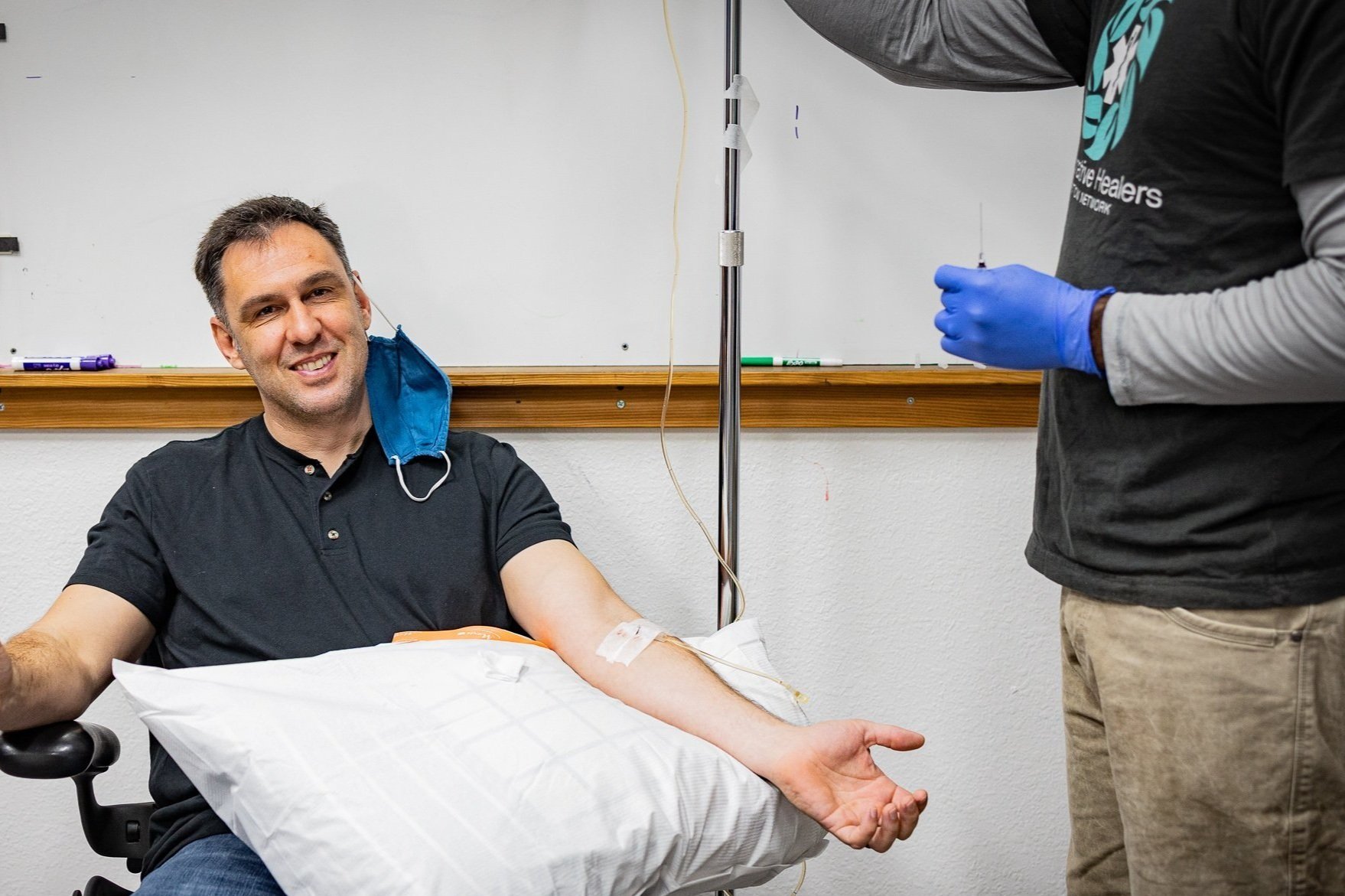
Gold Ridge Fire Chief Shepley Schroth-Cary (pictured here receiving IV glutathione at one of our wellness clinics) has funded his firefighters’ participation in both rounds of the Firefighter Detoxification Pilot Program and participated himself.
“The best thing I’ve ever done for myself.”
Applications for Round 4 of our Sonoma County Firefighter Detox Pilot Program open Oct. 2025
Firefighter Detox Pilot Program
Our partner physicians know from years of experience that inhalable and intravenous glutathione can help firefighters reduce their chemical burdens, heal chronic coughs, and reverse liver disease, but we’re determined to find out just how effective it can be.
No one has collected data on glutathione’s ability to detox firefighters – until now.
In partnership with Integrative Healers Action Network and Wild Oak Medicine, the Volunteer Fire Foundation has completed three rounds of this groundbreaking study based in Sonoma County, California, with a third in progress (to be completed in late Spring, 2025).
The Protocol:
• Intravenous glutathione – mobilizes toxins, supports detoxification pathways, heals liver tissue
• Nebulized glutathione – expectorates toxins and foreign matter from lungs, heals lung tissue
• Liposomal glutathione – supports detox and cellular function
• Supplements – support detoxification and liver function
• Sauna – helps to excrete mobilized toxins through sweat
• Massage – supports detoxification by improving circulation and lymphatic flow
Results
Round 1 (2023):
Duration: 16 weeks
Participants: ten firefighters (a mix of full-time and volunteers) from three local agencies
Testing: doctors ran full metabolic panels and three toxicology panels (before treatment, halfway through, and immediately after completion). Toxicology panels tested for 103 toxins including heavy metals, petrochemicals, mold toxins, environmental chemicals, and PFAS chemicals.
Key takeaways
The total number of high-range (95th percentile) toxins across all participants decreased 72.5%
Glyphosate was among the top three most prevalent toxins, with many participants showing levels 2-3 times the 95th percentile. By the end of treatment, glyphosate levels decreased 93%
Participants’ PFAS levels shifted slightly during Round 1 treatment, indicating that it may be possible to mobilize these chemicals – and if we can mobilize them, we may be able to reduce or even eliminate them. (SEE BELOW FOR UPDATE)
Results from the second round are even more compelling
Round 2 (2024)
Duration: 12 weeks
Participants: eleven firefighters (a mix of full-time and volunteers) from two local agencies
Testing: Same as Round 1
Key takeaways
The total number of high-range (95th percentile) toxins across all participants decreased 81.4%
The total number of high-range mycotoxins (molds) decreased 86.7%
The total number of high-range environmental toxins decreased 85.1%
The total number of high-range environmental toxins decreased 85.1%
According to preliminary data, the total number of high-range PFAS chemicals across all Round 2 participants decreased by 80%
(A 2023 article from the Harvard Public School of Health explains that PFAS are known as forever chemicals “because they don’t break down in the environment or in our bodies.” A report from the United States Navy states that “there is no recommended medical treatment to reduce PFAS in the body.” We hope to shift this narrative.)
Case studies from Round 2
Case study #1
Participant started with 16 toxins in the 95th percentile and 17 toxins in the 75th. After treatment, he had just two toxins in the 95th – an 87.5% decrease – and 11 toxins in the 75th. Within two months of starting treatment, he reported that an occupational ultrasound revealed that his chronic liver disease was no longer detectable.
To learn more about this case study, click here.
Case study #2

